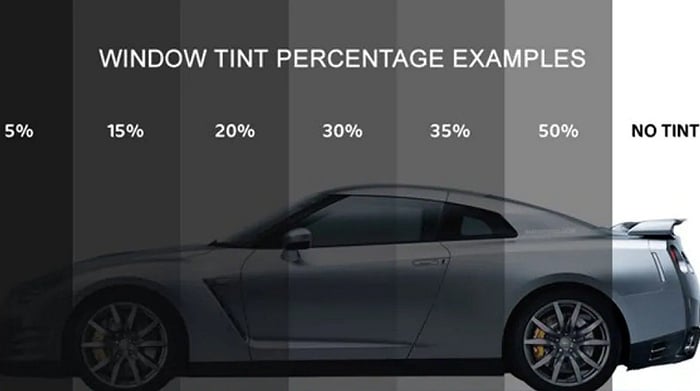It’s no news that the Sunshine State is home to a large proportion of luxury cars in the country — 25.3% to be precise.
But no matter how fancy the car is, Florida has some strict rules in place when it comes to getting your windows tinted.
These laws define the degree to which your windows and windshields can be tinted, what the exceptions are to these limits, and what penalties are involved in case of non-compliance.
So if you want to get your windows tinted in Florida and enjoy a hassle-free drive without being pulled over, then you need to know about and abide by the state’s tint laws. That’s what we’ll discuss in this guide.
Is Window Tint Legal in Florida?

Just like all other states in the U.S., Florida permits the use of window tint. However, there are some guidelines that you need to follow.
There are specifications in place for each window, especially the front windshield. That’s because the driver’s vision can be compromised if the tint is too dark.
Permitted Window Tint Darkness

Window tint darkness is measured and regulated with the help of a unit of measurement called VLT or visible light transmission.
VLT measures the percentage of light that is allowed to pass through the tinted window.
For instance, if a tinted film has a VLT level of 4%, that means that only 4% of the ambient light can pass through it.
The dark-tinted film is favored for the privacy it offers. In addition to this, it also keeps out light and heat.
However, there are different VLT levels permitted for different vehicles in Florida.
Sedans
Windshield: Any tint used should be non-reflective and above the AS-1 line on the windshield.
Driver-side windows: At least 28% VLT should be allowed by the tinted film.
Passenger-side windows: At least 15% VLT should be allowed by the tinted film.
Rear window: At least 15% VLT should be allowed by the tinted film.
SUVs and Vans

Windshield: Non-reflective tint should be used and placed above the AS-1 line.
Driver-side windows: 28% VLT is compulsory.
Passenger-side windows: 6% VLT is compulsory.
Rear window: 6% VLT is compulsory.
Acceptable Tint Reflection
Other than window darkness, another factor regulated by the state of Florida is window tint reflection. This is done to safeguard the visibility of oncoming traffic and to limit the amount of privacy afforded to private vehicles.
Florida does allow the use of reflective tint film up to a certain degree for different windows on your vehicle, with the windshield being an exception.
Sedans

Windshield: Non-reflective tinted film is mandatory
Driver-side windows: Shouldn’t reflect beyond 25%
Passenger-side windows: Shouldn’t reflect beyond 35%
Rear window: Shouldn’t reflect beyond 35%
SUVs and Vans
Windshield: Non-reflective tinted film is mandatory
Driver-side windows: Shouldn’t reflect beyond 25%
Passenger-side windows: Shouldn’t reflect beyond 35%
Rear window: Shouldn’t reflect beyond 35%
Other Florida Tint Rules You Need to Know

Here are some more rules and regulations to bear in mind when it comes to tinting laws in the state of Florida:
- Side mirrors: Similar to most other states, working dual mirrors are mandatory if the rear passenger windows are tinted.
- Exempted vehicles: Private investigative vehicles are exempt.
- Certificates: The tint film produced and sold by manufacturers need not be certified as legally compliant by them.
- Colors: Colored tint is banned in the state.
- Stickers: A sticker certifying legal tinting needs to be affixed to the door jamb.
- Medical exemptions: Medical exemptions are provided for certain conditions and the VLT requirement is lowered.
- Penalties: The local police use VLT meters to test the VLT levels of tinted glass. If the level exceeds legal limits, offenders are given a ticket and fined $116 for each ticket (you could get a ticket for each window that doesn’t comply with the law).
State of Florida Info

A popular vacation spot beloved for its beaches, water parks, and great weather, Florida sits in the country’s southeastern region.
As the 22nd-largest state in the country, Florida is also the 3rd most populous state.
The state is bordered by Alabama in the northwest, the Gulf of Mexico in the west, the Atlantic Ocean and the Bahamas in the east, and Georgia in the north.
Population: 21,781,128
Capital: Tallahassee
Registered vehicles: 7,670,861
Total lane miles: 275,376
Number of highways: 12
Tint law references: Florida Statutes
Medical exemption references: Division of Motorist Services

